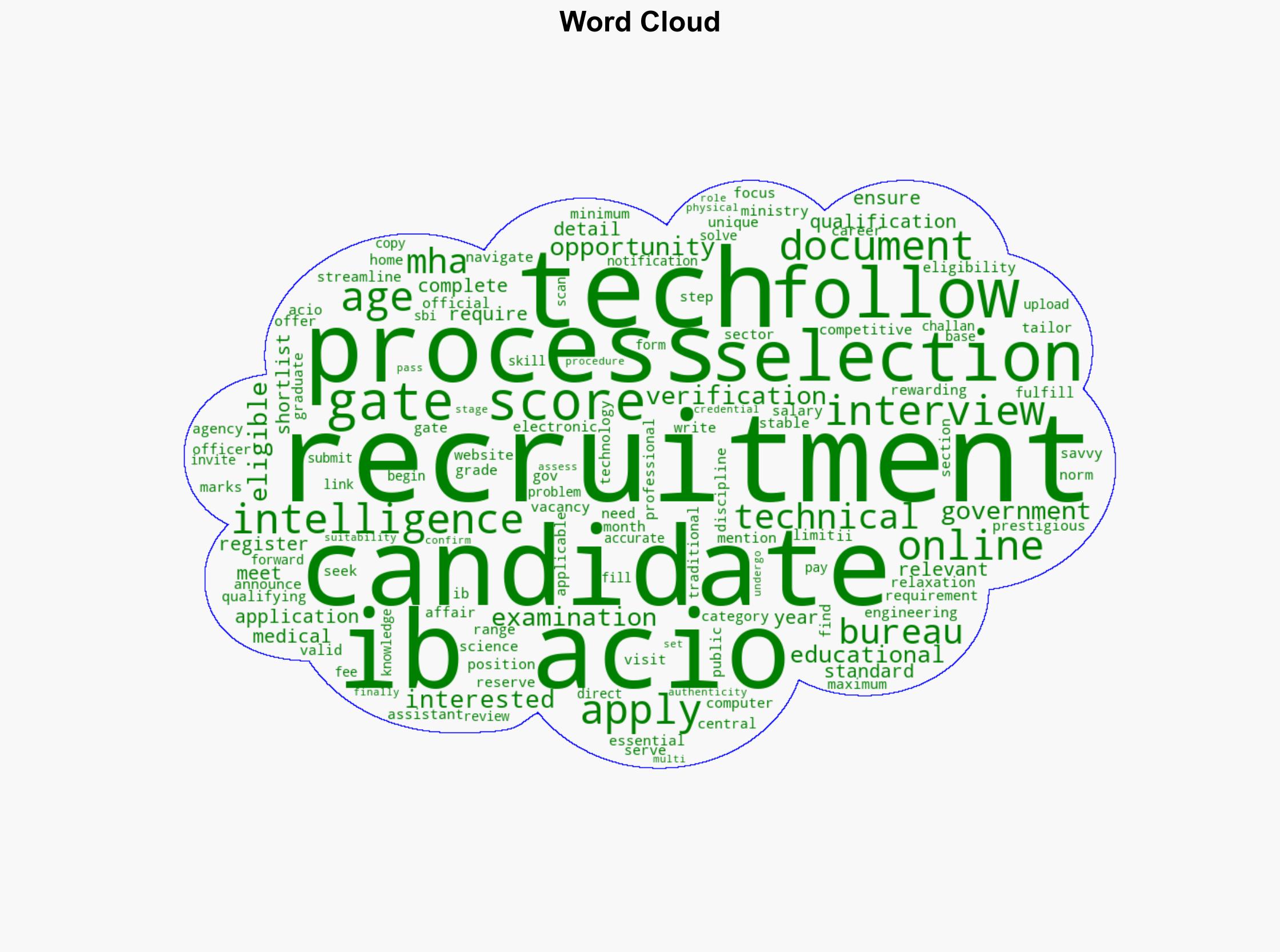IB ACIO Tech Recruitment 2025 registration begins for 258 posts at mhagovin Check eligibility and direct link to apply here – The Times of India
Published on: 2025-10-26
Intelligence Report: IB ACIO Tech Recruitment 2025 registration begins for 258 posts at mhagovin Check eligibility and direct link to apply here – The Times of India
1. BLUF (Bottom Line Up Front)
The Intelligence Bureau’s (IB) recruitment for Assistant Central Intelligence Officer (ACIO) Grade II Technical positions is primarily driven by the need to enhance technical capabilities within the agency. The hypothesis that this recruitment is a strategic move to bolster cybersecurity and technical intelligence capabilities is better supported. Confidence Level: Moderate. Recommended action is to monitor the recruitment process for any anomalies or deviations from standard procedures that could indicate underlying strategic shifts or vulnerabilities.
2. Competing Hypotheses
1. **Hypothesis A**: The recruitment is a routine process aimed at filling technical vacancies within the IB, focusing on candidates with strong technical backgrounds to support ongoing operations.
2. **Hypothesis B**: The recruitment is part of a strategic initiative to significantly enhance the IB’s technical capabilities, particularly in cybersecurity and intelligence analysis, in response to evolving national security threats.
Using the Analysis of Competing Hypotheses (ACH) 2.0, Hypothesis B is more likely given the emphasis on GATE scores, which suggests a focus on high technical proficiency, aligning with current trends in intelligence operations requiring advanced technical skills.
3. Key Assumptions and Red Flags
– **Assumptions**: It is assumed that the recruitment process is transparent and follows standard government protocols. It is also assumed that the focus on GATE scores is indicative of a need for technical expertise.
– **Red Flags**: Lack of detailed information on the specific roles and responsibilities of the recruits could indicate a strategic shift not publicly disclosed. The absence of information on how these roles integrate with existing operations could suggest potential operational silos.
4. Implications and Strategic Risks
The recruitment could signal a shift towards more technologically driven intelligence operations, potentially altering the balance of capabilities within the agency. This may lead to increased focus on cyber threats and require adjustments in training and resource allocation. There is a risk of over-reliance on technical solutions without corresponding enhancements in human intelligence capabilities.
5. Recommendations and Outlook
- Monitor the recruitment process and subsequent integration of new hires to assess alignment with strategic objectives.
- Scenario-based projections:
- Best Case: Successful integration of technical recruits enhances IB’s capabilities, leading to improved national security outcomes.
- Worst Case: Recruitment fails to address critical gaps, leading to operational inefficiencies and potential security vulnerabilities.
- Most Likely: Incremental improvements in technical capabilities with gradual integration into existing operations.
6. Key Individuals and Entities
No specific individuals are mentioned in the source text. The Intelligence Bureau and the Ministry of Home Affairs are the primary entities involved.
7. Thematic Tags
national security threats, cybersecurity, counter-terrorism, regional focus





